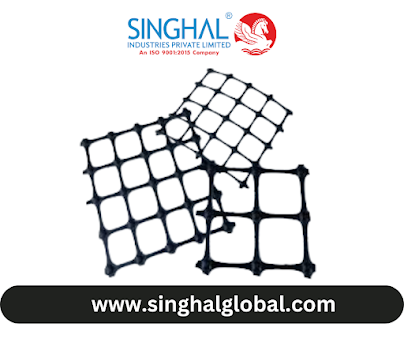The Importance and Applications of Geo Bags in Erosion Control
Erosion is a natural process that can have devastating effects on the environment and infrastructure. Enter geo bags—a revolutionary solution for combating erosion in various settings. In this article, we'll explore the significance of geo bags in erosion control, their applications, and why they are becoming a preferred choice worldwide.
What are Geo Bags?
Geo bags, also known as geotextile bags, are large, durable bags filled with soil or sand. They are made from high-strength, permeable fabrics designed to withstand harsh environmental conditions. Initially developed to provide an efficient and flexible erosion control method, geo bags have evolved over time, incorporating advanced materials and manufacturing techniques.
The Mechanism of Erosion Control
Understanding how erosion occurs is crucial to appreciating the effectiveness of geo bags. Erosion typically results from wind, water, or ice movement, which wears away the land. Geo bags act as a physical barrier, absorbing and dissipating the energy of these natural forces, thereby preventing soil loss and stabilizing the area.
Applications of Geo Bags in Erosion Control
Geo bags are incredibly versatile and find applications in various erosion control scenarios:
Coastal Protection
In coastal areas, geo bags are used to construct barriers and breakwaters, protecting shorelines from the relentless force of waves. Numerous case studies highlight the success of geo bags in mitigating coastal erosion, leading to long-term environmental and economic benefits.
Riverbank Stabilization
Geo bags are also effective in stabilizing riverbanks, which are prone to erosion during heavy rains and floods. By reinforcing the banks, geo bags help maintain the integrity of the river's course, protecting nearby communities and ecosystems.
Slope and Embankment Reinforcement
Steep slopes and embankments are particularly susceptible to erosion. Geo bags provide a cost-effective solution for reinforcing these areas, offering an alternative to more expensive and less sustainable methods like concrete retaining walls.
Geo Bags vs. Traditional Erosion Control Methods
When compared to traditional methods such as concrete structures, geo bags offer several advantages. They are more flexible, environmentally friendly, and often more cost-effective. Unlike other geosynthetics, geo bags can be tailored to specific site conditions, providing a custom solution for erosion control.
Geo Bags Manufacturers in India
India is home to several leading Geo Bags Manufacturers in India who adhere to stringent quality standards and certifications. Among them, Singhal Industries stands out for its innovation and comprehensive product range.
Singhal Industries
Singhal Industries is a renowned name in the geo bags industry in India. Known for its commitment to quality and innovation, the company offers a wide variety of geo bags designed for different erosion control needs. Their products are highly regarded for their durability and effectiveness.
Geo Bags Price Analysis
The Geo Bags Price can vary based on several factors, including material quality, size, and manufacturer. Despite these variables, geo bags are generally considered a cost-effective solution for erosion control, especially when factoring in their long-term benefits and low maintenance requirements.
Installation and Maintenance of Geo Bags
Installing geo bags is relatively straightforward, involving site preparation, bag placement, and filling. Proper maintenance is essential for ensuring their longevity. Regular inspections and minor repairs can extend the life of a geo bag installation, providing sustained erosion control.
Environmental Benefits of Using Geo Bags
One of the most significant advantages of geo bags is their environmental friendliness. They promote sustainability by reducing the need for more intrusive erosion control methods. Moreover, geo bags can help lower the carbon footprint of construction projects by minimizing the use of concrete and other materials with high environmental costs.
Future Trends in Geo Bags Technology
The future of geo bags looks promising, with ongoing innovations aimed at enhancing their performance and expanding their applications. New materials and manufacturing techniques are being developed to make geo bags even more effective and versatile, potentially opening up new markets and uses.
Conclusion
Geo bags have emerged as a vital tool in the fight against erosion, offering a flexible, cost-effective, and environmentally friendly solution. Whether protecting coastlines, stabilizing riverbanks, or reinforcing slopes, geo bags have proven their worth time and again. Geo Bags Manufacturers As technology advances, their role in erosion control is set to grow, providing an even greater impact on environmental preservation and infrastructure protection.
FAQs
What are Geo Bags made of?
Geo bags are typically made from high-strength, permeable geotextile fabrics that can withstand harsh environmental conditions.
How long do Geo Bags last?
The lifespan of geo bags can vary, but with proper installation and maintenance, they can last for many years, often over a decade.
Are Geo Bags environmentally friendly?
Yes, geo bags are considered environmentally friendly because they reduce the need for more intrusive erosion control methods and help lower the carbon footprint of construction projects.
How do Geo Bags compare in price to other erosion control methods?
Geo bags are generally more cost-effective than traditional methods like concrete structures, especially when considering their long-term benefits and low maintenance costs.
Where can I buy high-quality Geo Bags?
High-quality geo bags can be purchased from reputable manufacturers like Singhal Industries in India, who offer a range of products tailored to different erosion control needs.
.jpg)

.png)
Comments
Post a Comment